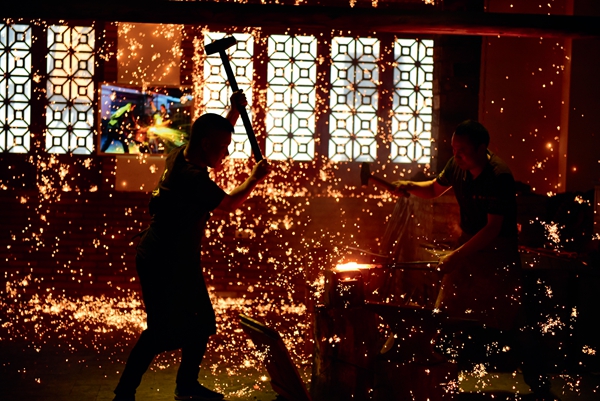Longquan Swords
China Today,January 18, 2018 Adjust font size:
Compared to sabers, rapiers or cutlasses that are more commonly seen in the West, Chinese swords are distinct in their look, and more importantly, rich connotation of culture.
In ancient China, people carried swords for self-defense, but also for displaying their social status and fondness of errantry. In modern times, sometimes swords are hung at home or office to ward off “evil” things. It is said that swords with a “soul” could alarm their masters when dangers approach or sinister things intrude. Therefore Chinese always called the sword baojian, meaning treasured sword.

Liquid iron sparkles around at Shen Guang-long Sword Smithy, Longquan County of Zhejiang Province.
The most famous sword in China is undoubtedly the Longquan Sword. According to historical records, it was the first iron sword, forged about 2,600 years ago by master smith Ou Yezi. Prior to that, swords had been made of bronze, while Ou was the person that figured out the method of smelting pig iron and forging it into a sword. The place of origin was hence named Longquan County, now in Zhejiang Province. Longquan later became a geographical indication; swords produced here are all called Longquan Swords.